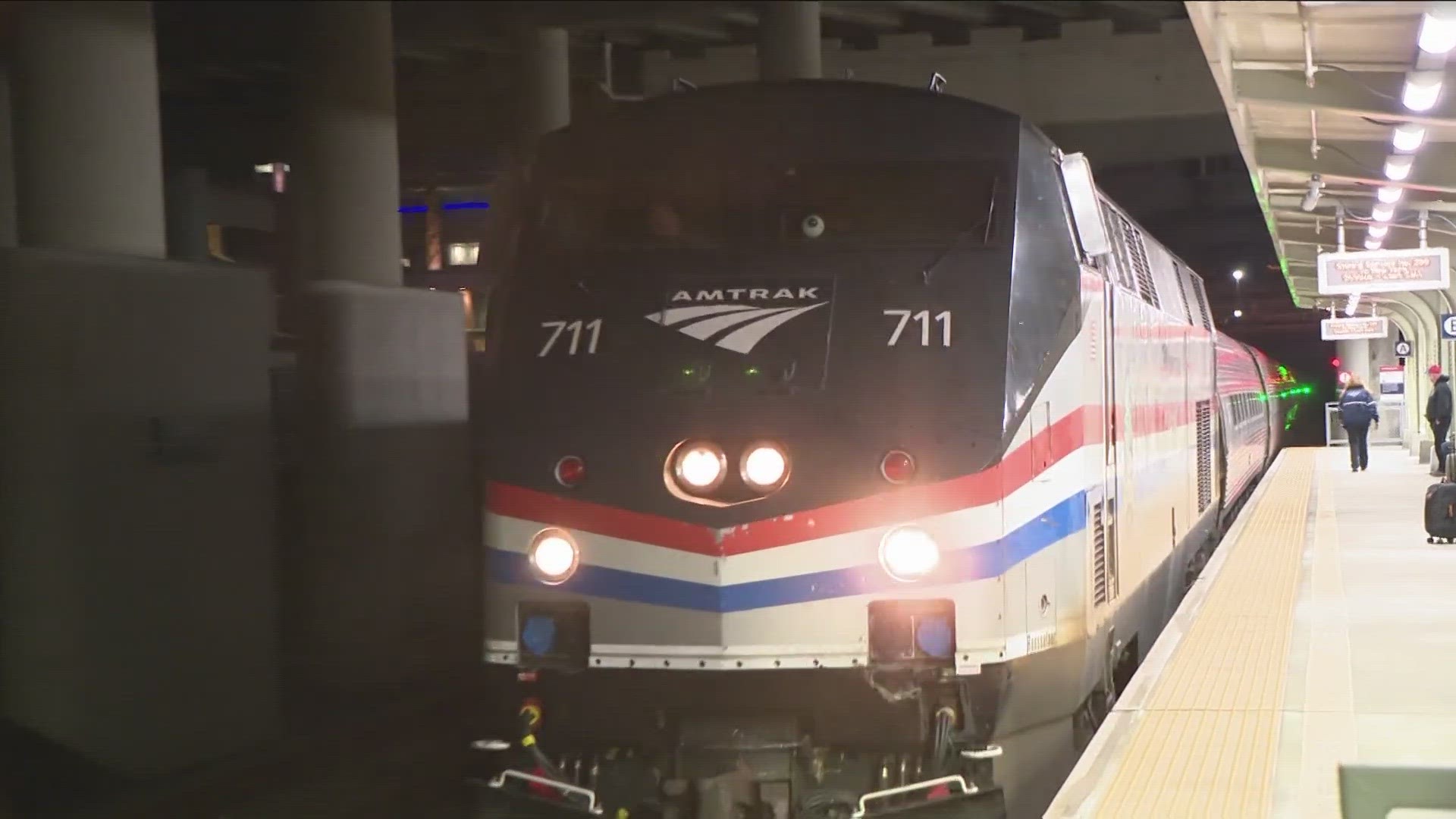ALBANY, N.Y. — The New York State Department of Transportation wants to build a $6 billion railroad across the state that would get a passenger from Niagara Falls to New York City in 7 hours, 30 minutes.
That’s only 90 minutes quicker than the existing rail route, called the Empire Corridor, that traverses the state.
That $6 billion price tag is also in 2017 dollars. Work on this Environmental Impact Statement (EIS) began in 2009 and took 14 years to complete.
The NYSDOT refused multiple requests for an interview and declined to answer specific questions regarding the over 456-page Environmental Impact Statement that was released in early February.
What is the plan?
The NYSDOT studied five different plans in the EIS. The plans are: Base, 90A, 90B (DOT preferred plan), 110 and 125.
The base plan essentially keeps everything as is along the Empire Corridor, and existing Amtrak service across the state wouldn’t change.
Plan 90A would call for the building of 67 miles of new rail line, upgrades to 17 crossings and 74 bridges. Trains in the 90A plan would have a maximum operating speed of 90 mph, not the generally accepted speed of 110 mph to be considered high-speed. The 90A plan would also operate at $28 million loss each year, according to the study.
LEARN MORE: High Speed Rail Empire Corridor
The 90B plan is preferred option by the NYSDOT, according to the environmental impact study. The big difference between the 90A and 90B plan is that the 90B plan calls for the construction of 370 miles of new track across the state. 273 miles of that new construction would be built between Depew and Schenectady. This would establish a third track along the existing corridor and in some parts a fourth track.
Much of the existing corridor track is owned by private entities, such as CSX.
The 90B plan would increase round trips from Albany to Niagara Falls by four, totaling in eight daily.
A round trip from Niagara Falls to New York City would take 7 hours, 30 minutes if the 90B plan were implemented.
The EIS suggests that there could be as many as 1 million more passengers per year if the 90B plan were implemented, compared to the annual ridership of 1.6 million in the base plan.
Similar to the 90A plan, 90B would operate at a substantial loss each year. The operating budget is estimated at $176M, and the 90B plan is only expected to bring in a revenue of $143 million, a $33 million annual deficit.
The study suggests the 90B plan would cost $5.97 billion in 2017 dollars. Adjusted for inflation that would be $7.2 billion if the project started today.
The 110 plan would install 384 miles of new track along the empire corridor, but would also support the ability for trains to travel a maximum of 110 miles per hour. The price tag for the Alternative 110 plan is $6.69 billion in 2017 dollars and also operate on a budget of $178 million annual. The annual revenue generated if Alternative 110 was implemented is $153 million, resulting in an annual deficit of $25 million.
Even though the 110 plan would technically be high speed, a round trip from New York City to Niagara Falls would take 7 hours, 22 minutes. Compared to the DOT’s preferred 90B plan, the Alternative 110 plan is only 14 minutes faster.
The golden goose of the 456-page report is the alternative 125 plan. Alt-125 would install a 283-mile electrified two-rail system between Albany and Buffalo.
The alternative 125 trains would have a maximum speed of 125 mph and an average of 108 mph between Albany and Buffalo.
The Alt-125 plan would also propose a new Exchange Street train station in Buffalo, even though the existing station was rebuilt in November of 2020.
Funding
The EIS points to 16 different funding sources for which every rail project is selected.
The report also indicates that the state wouldn’t be able to fund any of these projects on its own, saying, “Absent significant federal funding, NYSDOT currently has limited capacity to undertake major long-term investments in high-speed passenger rail projects.”
The NYSDOT would not answer any direct questions send by email regarding any funding that has, or hasn’t, been secured.
What's Next
NYS Senate Transportation Committee chairman Tim Kennedy says that he will push for public hearings on a proposed high speed rail project by the end of the year.
The NYSDOT would not confirm, because they didn't answer WGRZ's specific question, what the next step in the process is, or whether more studies need to be conducted.
Gov. Kathy Hochul has not mentioned high speed rail in recent years. While the governor has been advocated for better rail downstate, she has yet to weigh in on this environmental impact statement released by the NYSDOT.
The governor's office deferred our questions to the NYSDOT.
While the NYSDOT did not answer our direct questions, the provided the following statement:
"New York State is committed to improving passenger and freight rail service across the Empire Corridor. The publication of the Final Tier 1 Environmental Impact Statement is an important milestone that will allow the Department of Transportation to seek federal funds for a series of individual projects that will help increase speeds and reduce travel times along the entire 464-mile corridor."

